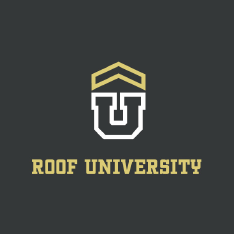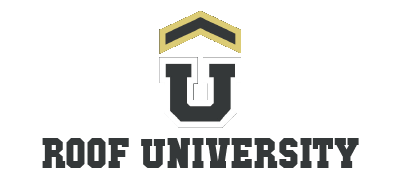Flat roofing is a popular choice for both residential and commercial buildings, offering a sleek design, affordability, and efficient use of space. Among the most widely used flat roof materials are EPDM, TPO, and roll roofing, each catering to specific needs and preferences. This guide provides an overview of these materials, highlighting their features, benefits, and best applications. Whether you’re a homeowner, roofer, or small business owner, this knowledge will help you make well-informed decisions about flat roofing.
What is Flat Roofing
Flat roofing systems are designed with a minimal slope, creating a nearly horizontal surface. This slight pitch ensures proper drainage to prevent water accumulation.
Flat roofs are often associated with commercial buildings but are becoming increasingly popular in residential construction due to their modern aesthetic. They also maximize usable space, making them ideal for rooftop gardens, patios, or HVAC installations.
Flat roofing requires materials specifically designed to provide water resistance, durability, and energy efficiency. Among these, EPDM, TPO, and roll roofing stand out as versatile and effective solutions.
EPDM Roofing: Durable and Reliable
What is EPDM
EPDM, short for Ethylene Propylene Diene Monomer, is a synthetic rubber membrane renowned for its flexibility and durability. Leading manufacturers such as Firestone Building Products and Carlisle SynTec Systems have made EPDM a trusted choice for flat roofing.
Composed of ethylene and propylene derived from oil and natural gas, EPDM is available in black and white variants. These options offer versatility, catering to different energy efficiency needs.
Benefits of EPDM Roofing
EPDM’s exceptional weather resistance is one of its primary benefits. It can withstand UV radiation, ozone exposure, and extreme temperatures, making it suitable for a variety of climates.
With a potential lifespan of 30 years or more, EPDM reduces the need for frequent roof replacements. Its lightweight and straightforward installation also contribute to lower labor costs.
Best Uses for EPDM
Black EPDM is ideal for cooler climates where heat absorption can reduce energy costs. On the other hand, white EPDM reflects sunlight, making it suitable for warmer regions where energy efficiency is a priority.
Maintenance and Costs
Maintaining an EPDM roof involves regular inspections to check for punctures or tears. The material is easy to repair, often requiring simple adhesives or patches. Costs typically range from $4 to $10 per square foot, offering a cost-effective solution for long-term roofing needs.
TPO Roofing: Energy-Efficient and Modern
What is TPO
Thermoplastic Polyolefin, or TPO, is a single-ply membrane combining polypropylene and ethylene-propylene rubber. Manufacturers like Johns Manville and Versico Roofing Systems have popularized TPO for its energy-efficient properties.
Advantages of TPO Roofing
TPO’s reflective white surface makes it an excellent choice for reducing cooling costs in hot climates. The material is resistant to UV rays, chemicals, and punctures, ensuring durability.
TPO is lightweight, flexible, and easy to install, aligning with modern construction needs. Its eco-friendly composition also appeals to environmentally conscious property owners.
Limitations of TPO
While TPO is a modern and efficient roofing option, its long-term performance is still being evaluated. Most TPO roofs have a lifespan of 15 to 25 years, which is shorter than EPDM. However, advancements by manufacturers like Sika Sarnafil continue to improve its durability.
Ideal Applications for TPO
TPO is particularly well-suited for buildings in hot, sunny climates where its reflective properties help reduce energy consumption. It is also a preferred choice for environmentally focused commercial properties.
Roll Roofing: Affordable and Easy to Install
What is Roll Roofing
Roll roofing is an asphalt-based material provided in large rolls, simplifying installation. Companies like TAMKO Building Products and Atlas Roofing Corporation produce reliable roll roofing options.
Pros and Cons of Roll Roofing
Roll roofing is among the most cost-effective flat roofing solutions, ideal for small projects or temporary needs. However, its lifespan is shorter, ranging from 5 to 10 years.
The material’s vulnerability to extreme weather limits its use to secondary structures, such as sheds, garages, or outbuildings.
When to Use Roll Roofing
Roll roofing is best for budget-conscious projects or structures that do not require long-term roofing solutions. Its affordability and ease of installation make it a practical choice for temporary or secondary applications.
How to Choose the Right Flat Roofing Materials
Selecting the right flat roofing material depends on several factors:
Climate and Energy Efficiency Needs
Black EPDM is ideal for retaining heat in cooler climates, while white TPO offers excellent heat reflection for warmer regions.
Budget and Lifespan Preferences
Roll roofing is affordable but short-lived, making it suitable for temporary solutions. EPDM and TPO provide longer lifespans, offering better long-term value.
Structure Type and Usage
For primary structures like homes or businesses, EPDM or TPO are excellent choices. Roll roofing is more appropriate for secondary or less critical buildings.
Popular Brands and Manufacturers for Flat Roofing
Top Manufacturers of EPDM and TPO Roofing
- Firestone Building Products
- Carlisle SynTec Systems
- Johns Manville
- Versico Roofing Systems
Leading Providers of Roll Roofing
- TAMKO Building Products
- Atlas Roofing Corporation
Choosing products from reputable manufacturers ensures quality, reliability, and support through warranties.
Maintenance Tips for Flat Roofs
To maximize the lifespan of your flat roof, follow these maintenance tips:
- Inspect the roof regularly for signs of damage or debris buildup.
- Clean the surface to prevent standing water and potential leaks.
- Address issues like punctures or tears promptly to avoid further damage.
For significant repairs or maintenance, consult a professional roofer to ensure proper handling.
Conclusion: Which Flat Roofing Material is Right for You
EPDM, TPO, and roll roofing each have unique advantages, making them suitable for various applications. EPDM offers unmatched durability and flexibility, making it a reliable choice for long-term projects. TPO provides modern energy efficiency and sustainability, appealing to environmentally conscious property owners. Roll roofing, while less durable, is an affordable option for smaller, temporary projects.
By evaluating your climate, budget, and building needs, you can select the flat roofing material that best suits your requirements, ensuring a long-lasting and efficient solution.
Parks
Matt is Five Points Roofing's VP of Business Development, directly in charge of company growth and building a true contracting brand that is trusted by millions of homeowners. It’s not all business for Matt though, being 6’5”, he’s an avid amateur beach volleyball player and golfer. Competition is his thing. Happily married to his wife Laura, they also have a giant 72 pound ex-racing greyhound that’ll run laps around you.
Roof University is the place if you're a roofer, property owner, or insurance adjuster.
